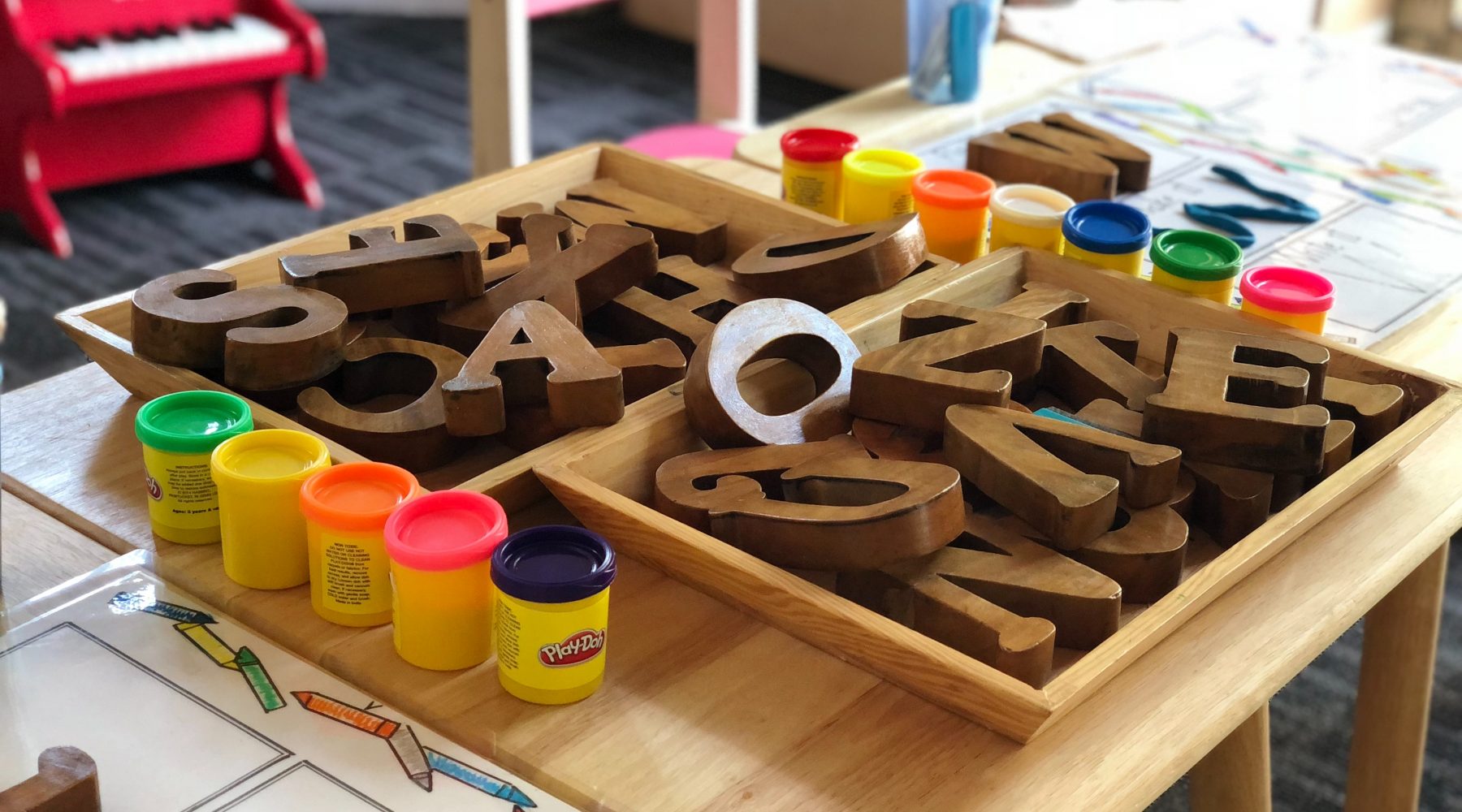NFP/large provider LDCs most likely to show quality improvements, ACECQA commissioned report shows

Long day care (LDC) services run by not for profit (NFP) organisations, or LDCs run by larger providers, regardless of governance type, are most likely to see sustainable quality improvements, as measured by their national quality standard (NQS) rating over consecutive assessments periods, a newly released report commissioned by the Australian Children’s Education and Care Authority (ACECQA) has found.
The findings are part of a broader examination of the drivers of quality improvement in LDC services nationally, commissioned by ACECQA in October 2018.
The study was conducted by a national consortium of researchers led by Macquarie University and comprised three separate phases each focusing on different components of the research projects key aims.
Phase 1 – Service characteristics associated with quality improvements
As noted above a key finding of the Phase 1 research was that NFP LDCs and LDCs operated by larger providers (defined as those with more than eight services), were most likely to improve their NQS rating from working towards NQS to meeting NQS.
In addition, the study found that the services that were most likely to see an improvement in their NQS rating from meeting NQS to exceeding NQS were again NFP LDCs and LDCs operated by larger providers.
LDCs with greater than 60 licence places, or services that had not experienced a change in ownership prior to assessment, regardless of governance type were also in the most likely to improve category.
The ‘change in ownership’ predictor was also evident in the working towards NQS to meeting NQS cohort, where it was found that a change in ownership adversely impacted the probabilities of ratings improvement.
These results provide useful context in understanding the significant quality improvement trends highlighted in recent releases of the NQS quarterly snapshot, where the percentage of working towards centres across all of the early childhood education and care (ECEC) sector continues to trend lower.
These initial findings were drawn from a sample size of 1,936 services taken from the National Quality Agenda IT System (NQA ITS).
Phase 2 – Factors and strategies that contribute to quality improvements
Phase 2 of the project focused on identifying factors and strategies that contributed to quality improvements specifically in Quality Area 1 (QA1), Quality Area 7 (QA7) drawn from an analysis of services quality improvement plan (QIP) and assessment and rating (A&R) reports.
The key factors identified as influential to quality improvement in QA1 were:
- Sustained commitment to improvement where services that were meeting NQS emphasised the ways they collected feedback and data to review the service philosophy, whereas exceeding NQS services had a culture that included embedded systems for continuous improvement.
- Theories – research of learning based on the child as a competent and capable learner saw meeting NQS services reference approaches that could be attributed to one or more theorists or groups of theories whereas exceeding NQS were more likely to articulate the core of each theory and were able to provide detailed examples.
- Planned critically reflective approach meeting NQS services saw educators using reflective planning cycles but relying more on conversations and informal discussions whereas exceeding NQS services were more strategic and reflected on children’s behaviour, the environment, philosophy, teaching practices and their own pedagogy.
- Early Years Learning Framework (EYLF) was central to meeting NQS service quality improvement through supporting children’s learning and development by considering the five learning outcomes linking decisions clearly to the EYLF. Exceeding NQS services made reference to learning outcomes, but also to the EYLF principles and practices.
- Alignment with service philosophy where meeting NQS services had evidence of the philosophy as a living document and “educators regularly demonstrated practice that mirrored the service’s philosophy” exceeding NQS services focused on how the philosophy was visible in their curriculum decisions and documentation.
The key strategies that were influential in quality improvement in QA1 were communication strategies that encouraged families to be involved in service, strategies that maximise learning including listening to children, intentional teaching, relationships that were responsive to children and using routines as opportunities for development and learning and educator practices that encouraged collaboration.
The key factors identified as influential to quality improvement in QA7 were:
- Established systems – procedures and policies that were transparent to stakeholders were evident in both meeting NQS and exceeding NQS services, but exceeding NQS services had more comprehensive systems in place for regularly reviewing policies, implementing change as well as managing grievances.
- Professional growth and learning systems in both meeting NQS and exceeding NQS services supported pedagogical leadership by the educational leader but exceeding services tended to have an early childhood teacher (ECT) in the education leader role and a more embedded approach to the pedagogical program, mentoring educators and reflecting on their role.
- Positive culture ECEC settings in which the service philosophy had clear and high expectations, a commitment to continuous improvement and effective teamwork were considered critical factors contributing to the positive culture for all services however in exceeding NQS services the statement was more detailed with high expectations for all stakeholders.
With respect to supportive workforce factors such as staffing arrangements, valuing staff, structural factors, and time for planning, no differences were apparent between services meeting NQS or exceeding NQS the workforce factors included but all services noted the value of administrative support as a critical factor.
The key strategies that were influential in quality improvement in QA7 were strategies that promote effective and continuous professional learning for team members, strategies that ensured the systematic processes were in place to revise policies and procedures as well as strategies that ensured educators were clear about their roles and responsibilities, procedures that include clear inductions for new staff and that ensured educators could collaborate effectively with management through feedback provision.
These findings were drawn from a sample size of QIPs and A&R reports for 60 services.
Phase 3 – Factors that were considered enablers and challenges to quality
Phase 3 of the project focused exploring factors related to quality improvement in the Educational Program and Practice (QA1) and Governance and leadership (QA7) in which it was found generally most participants recognised the role that leadership played in facilitating and sustaining quality improvement.
It was also noted that the drive to improve leadership capabilities was particularly evident in services that were operated by larger Approved Provider organisations, where there were dedicated people and resources to assist service leaders in quality and operational areas.
The key factors identified as enablers and challenges in QA1 were:
- The depth of educators’ knowledge and understanding of the Early Years Learning Framework including the understanding of the language, concepts, underpinning theory and content of the learning outcomes, and interrelationships between these.
- Service approaches to program planning although the case studies revealed a diversity of planning approaches, reaffirming there is no one right way to plan and document learning.
- Educator understanding and enactment of the assessment and planning cycle identified by service leaders and educators as a key focus for quality improvement, often prompted by feedback in the A&R report.
- Program documentation with case studies revealed that documentation continues to be a source of anxiety for many service leaders and educators, both in terms of quality and quantity.
- Critical reflection skills with a focus on strengthening critical reflection emerged as a recurring theme for quality improvement however the concept of critical reflection was not always well understood, and several leaders spoke about the need to support the development of this skill through mentoring and structured learning experiences.
The key factors identified as enablers and challenges in QA7 were:
- Focus on strengthening leadership within services most often concentrating on positional leadership roles such as the service director or service manager as well as the educational leader. Organisational support was generally acknowledged as a significant contributor to quality improvement.
- Understanding and support for the role of educational leader was highlighted by a general recognition that the role of educational leader was critical in driving quality improvement. However, there were significant differences in how the role was conceptualised and understood.
- Team collaboration ie: a collaborative and unified team approach was seen to be critical in achieving genuine and sustainable quality improvement. Key to this were leaders creating a work culture and environment that cultivated positive team relationships and effective teamwork.
- Strategic and sustainable approaches to professional development in particular access to quality professional development was seen by service leaders and educators alike to be a key contributor to improved service provision especially the provision of quality educational programs and practice.
These findings were drawn from a sample of 15 services where in-depth case studies were conducted.
To read the ACECQA report please click here or to read the summary information document created by ACECQA please click here.
Popular

Policy
Practice
Provider
Quality
NSW Government launches sweeping reforms to improve safety and transparency in early learning
2025-06-30 10:02:40
by Fiona Alston

Quality
Provider
Policy
Practice
WA approved provider fined $45,000 over bush excursion incident
2025-07-01 07:00:01
by Fiona Alston

Workforce
Policy
Quality
Practice
Provider
Research
ECEC must change now, our children can’t wait for another inquiry
2025-07-02 07:47:14
by Fiona Alston













